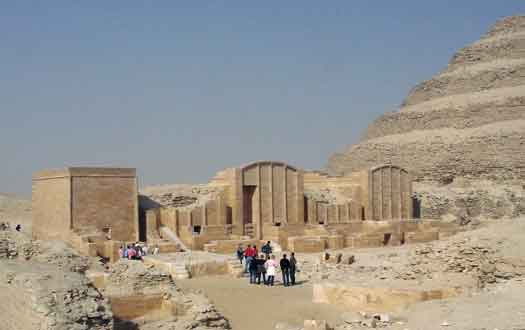
The Heb-Sed Court from the Southwest
In addition to the Great Court, there was another important ceremonial area connected with the king's jubilee located within the complex. Part of the ritual included ceremonies at the chapels of the gods of both Upper and Lower Egypt and the double-coronation of the pharaoh. The actual events took place in an open area next to the palace, where temporary reed structures would have been set up. Perhaps there had been a time when the pharaoh visited the major temples of the gods throughout the country but, by historic times, it had become the practice for the gods to meet the pharaoh on his terms, at the royal capital.
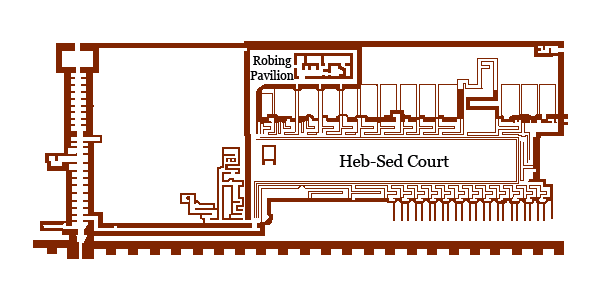
Access was via a long passage that runs (after a dogleg) straight north from the Entrance Passage to enter the courtyard at the south-eastern corner. At that point there is another option for, immediately to the left, is the entrance to a building of unknown function. Some corridors and rooms have been explored but there is no published information. The area between the Entrance Passage and the Heb-Sed Court was filled with rubble and it is not known whether there is more of this building or not.
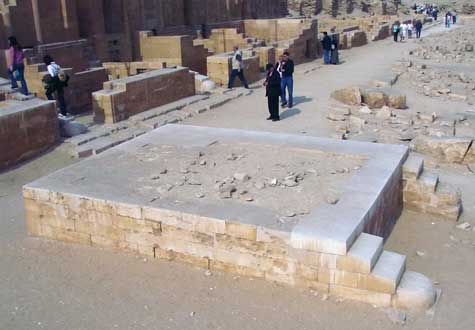
Double Throne Dais in the Heb Sed Court
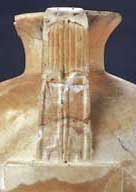
The courtyard itself is about 95 metres long and 18 metres across with the main focus on a low platform at the southern end. Two sets of steps led up to a double throne dais where Djoser’s ka, perhaps represented by a pair of statues, was enthroned as ruler of Upper and Lower Egypt. Such platforms are frequently depicted in Egyptian art and the double throne with
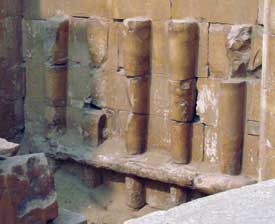
two kiosks back-to-back, is the hieroglyph for Heb-Sed. The illustration (left) shows it on the handle of an alabster jar found in one of the galleries underneath the Step Pyramid.
The long sides of the courtyard were lined with dummy chapels—blocks of almost solid masonry. The ones on the west side were mainly typical of Upper Egypt while those on the opposite side were characteristic of the Delta. In front of each chapel was a small courty, divided into two compartments by a screen wall that created a bent-axis approach. Entry to the forecourt was through a stone door, complete with carved hinges and pivots, that stood permanently open. Along the side walls of the inner part of the courtyard were carved versions of the wooden fences shown in contemporary depictions of these types of shrines.
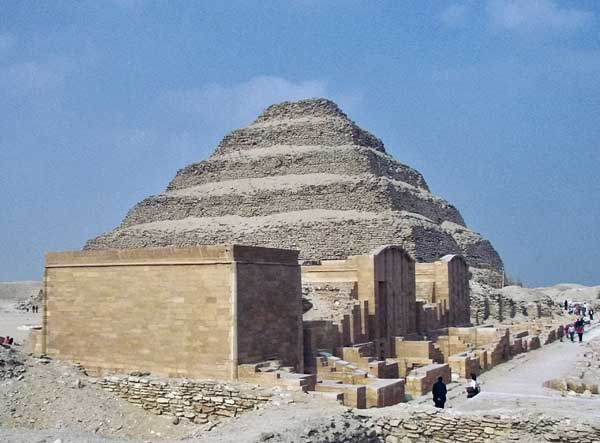
Heb Sed Court from the top of the Entrance Passage
SEE







0 التعليقات:
إرسال تعليق